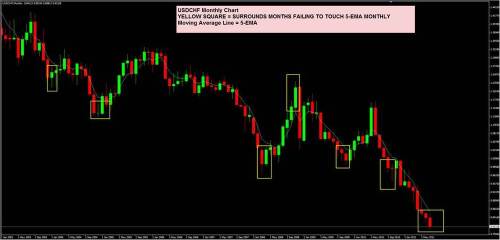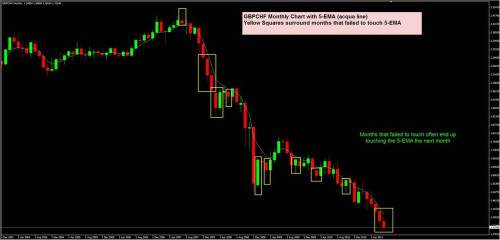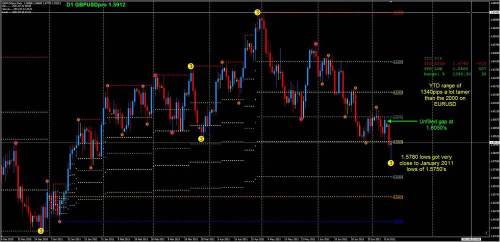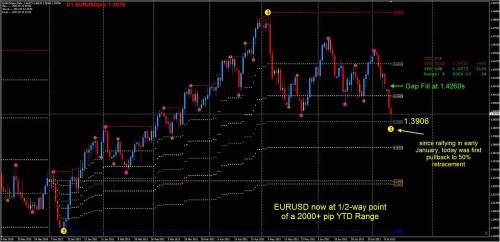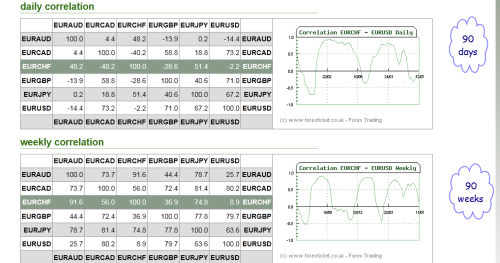Having a look at some forex pairs, there are pairs that have run quite a bit, so much that price has extended away from the 5-EMA by quite a few pips. This is an interesting market condition because in general, most forex pairs will at some point during the month come into contact with the 5-EMA on the monthly time frame (I estimate about 75% of the time). Obviously when a currency pair is trending very sharply it will sustain the kind of momentum that extends price away from the 5-EMA on the monthly and does not touch it. However, this condition of not touching the 5-EMA usually struggles to persist for an reasonable amount of time.
Here are some interesting currency pairs showing this dynamic
· USDCHF has not touched the July monthly 5-EMA (0.8571) and it did not touch the 5-EMA during June. In the last couple of years, the USDCHF has had a few instances where it went 2 months in a row without touching the 5-EMA. One of those instances preceded a sharp upward reversal: October-November of 2009 failed to touch the 5-EMA and preceded a multi-month >1500-pip rally in USDCHF.
· GBPCHF has not touched the July monthly 5-EMA (1.3866) and it did not touch the 5-EMA during June. The monthly chart has dropped about 11,800 pips in the last 3 years…..enough said.
Does it mean that these pairs are set to reverse any time soon?
No “signal” or technical condition guarantees success 100% of the time, but if you are trying to assign odds to the situation, it’s likely that the odds of a +1000-pip bounce are edging ahead of the odds of a -1000-pip tank from where the prices currently stand. Big downtrends can reverse quite suddenly and quite violently, a look at the monthly charts of AUDUSD and NZDUSD during late 2008 show that when a monthly price bar prints without touching the 5-EMA, the coming months can get quite hairy, planting the seeds for a sharp reversal

